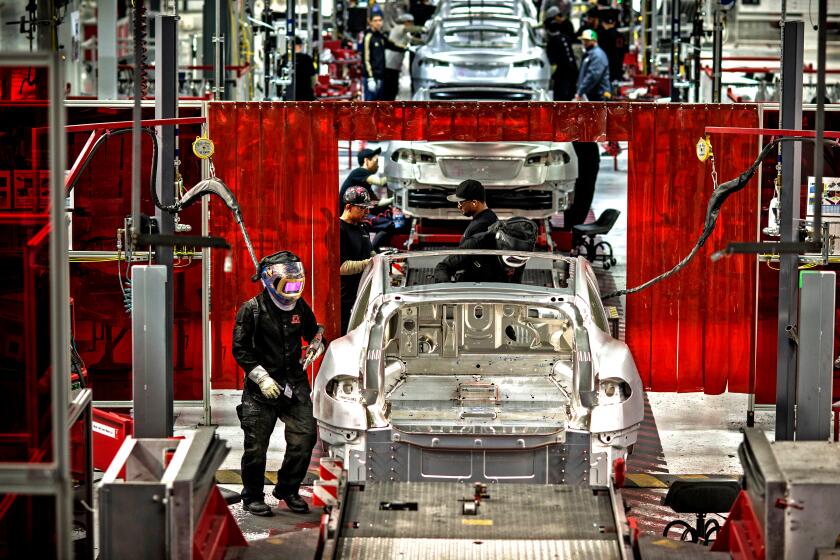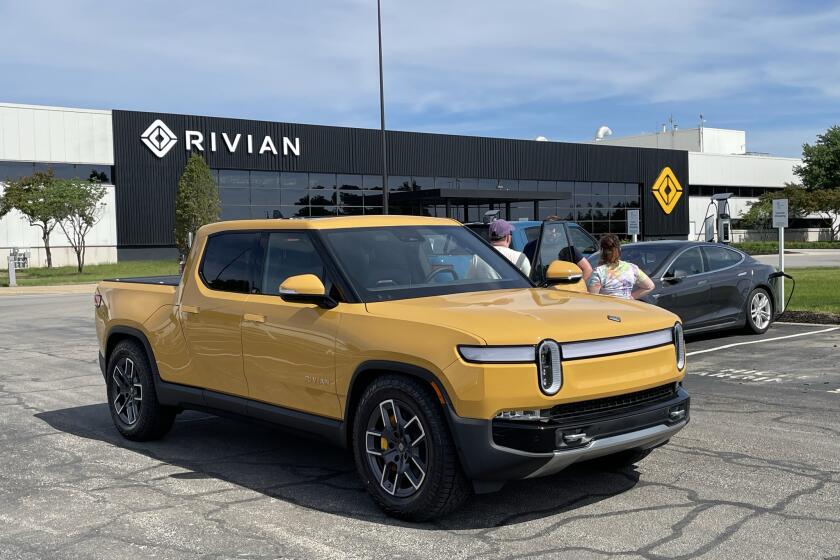Driving While Distracted Is Common, Researchers Say
Nearly all drivers become distracted when behind the wheel, and cellphones aren’t the main culprit, a study released Wednesday found.
Reaching for something inside the car and fiddling with the audio system are the primary causes of driver inattention, according to a report by the American Automobile Assn.’s Foundation for Traffic Safety, a nonprofit driver education group.
“What we want to do is make people more aware of the fact that there are distractions beyond cellphones,” said Stephanie Faul, the group’s communications director. “When you’re fumbling around in the foot well because you’ve dropped part of your sandwich, that’s as much a distraction as anything else.”
The study was conducted from 2001 to 2002 by researchers at the University of North Carolina’s Highway Safety Research Center in Chapel Hill and by Philadelphia traffic research consultants TransAnalytics. Researchers used small windshield-mounted cameras to videotape 70 volunteers from Chapel Hill and Philadelphia driving their own cars.
The project then analyzed three random hours of tape from the average of seven to eight hours collected for each subject and tabulated their concentration when behind the wheel.
More than 97% of the drivers leaned or reached for something inside the car; more than 91% adjusted the vehicle’s audio controls. More than three-quarters carried on conversations and more than 71% ate or drank behind the wheel, the report found. Just 30% of the 28 drivers with cellphones used them in the car, according to the report.
“Cellphones have been getting a disproportionate amount of negative attention relative to the type of distraction” they cause, said Barbara Harsha, executive director of the Washington-based Governors Highway Safety Assn., which seeks to educate states about traffic safety. “People just love to hate cellphones.”
Excluding talking to passengers, drivers engaged in a potentially distracting activity 16.1% of the time that their cars were moving. The scope of the problem is considerable: Inattentive drivers account for up to 30% of police-reported traffic accidents, about 1.2 million a year, according to the National Highway Traffic Safety Administration.
Only 17 states, including California, collect information on driver cellphone usage and inattention that contribute to traffic accidents, Harsha said.
The Governors Highway Safety Assn. has collaborated with federal transportation organizations to draft guidelines for states on how to gather such data. The California Highway Patrol found that a little more than 1% of the 491,083 drivers involved in traffic collisions in the state from January to June 2002 were inattentive in their driving. Of those 5,700 drivers, 11% were talking on cellphones and 9% were tuning the radio. Six of the 611 cellphone-related crashes were fatal. The majority -- 67% -- of the accidents were caused by other distractions, from daydreaming to reading street signs, the study found.
Inattention is “not a huge problem in California,” said Anne DaVigo, a spokeswoman for the California Highway Patrol. But cellphone use is especially noticeable on congested, slow-moving California freeways, DaVigo said. “While the numbers of persons killed or injured [due to cellphone use] aren’t high, obviously we’re concerned when people are dying.”
The traffic foundation study was the second phase of a project that began in 1999 with the analysis of NHTSA crash data to determine the extent that driver distraction caused accidents. The recent phase of the project was designed to examine “what people actually do in their cars,” said Jane Stutts, the report’s lead researcher.
Stutts’ team had to halve the sample size from 144 people to 70 when it ran into budget and time constraints while cataloging hundreds of hours of videotape. The reduced sample size did not compromise the findings, Stutts said, although it did make analyzing population subsets difficult. “We’re very comfortable with what we have,” she said, adding that the NHTSA has several larger-scale driver distraction studies underway.
The foundation hopes to help combat the problem of driver inattention with educational warning sections in state driver’s license manuals. Only six states now offer information to new drivers on the dangers of distracted driving. The organization also has unveiled a public service announcement campaign to inform drivers of the risks of inattention.
“If the government, industry and the traffic safety community can join together to educate the public, we can make significant progress fighting the very real problem of distracted driving,” Robert L. Darbelnet, the foundation’s president and chief executive, said in a statement.
*
(BEGIN TEXT OF INFOBOX)
Driven to distraction
Among the many things that weaken driver attention, the study found, cellphones are low on the list. With the exception of manipulating air conditioning and other controls, which all subjects were observed doing, here is the percentage of drivers who engaged in the most common distracting activities:
Reaching, leaning, etc. -- 97.1%
Changing audio controls -- 91.4%
External distraction -- 85.7%
Conversing -- 77.1%
Eating/drinking/spilling -- 71.4%
Misc. internal distractions --- 67.1%
Preparing to eat/drink -- 58.6%
Grooming -- 45.7%
Reading or writing -- 40.0%
Talking on cellphone -- 30.0%
Dialing cellphone -- 27.1%
Adult distraction -- 22.9%
Answering cellphone -- 15.7%
Child distraction -- 12.9%
Baby distraction -- 8.6%
Smoking -- 7.1%
Source: AAA Foundation for Traffic Safety



